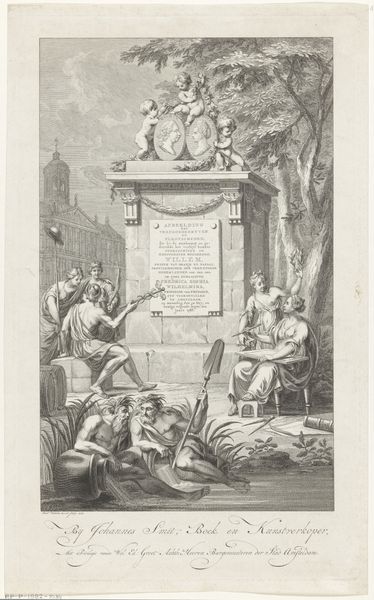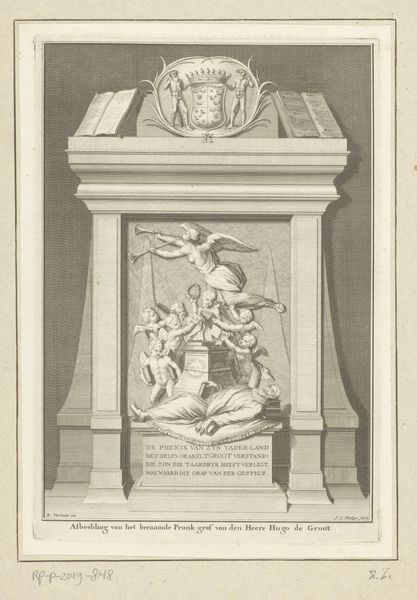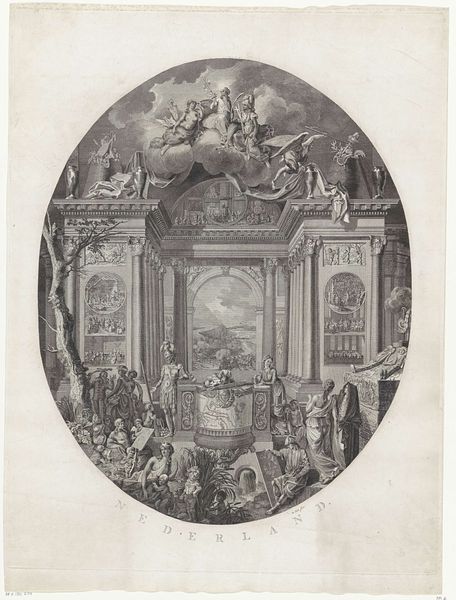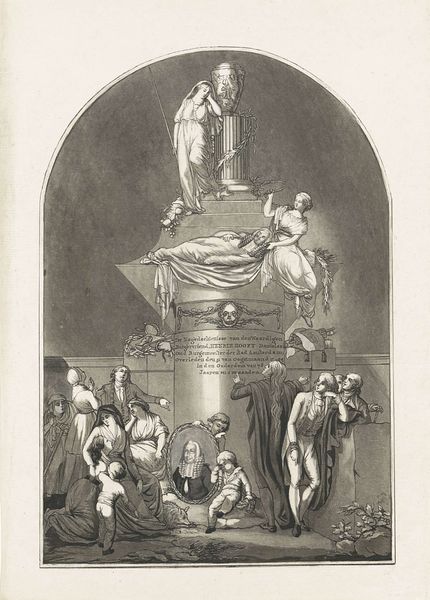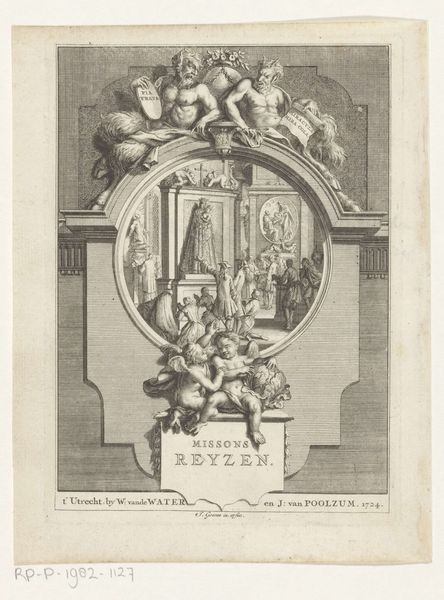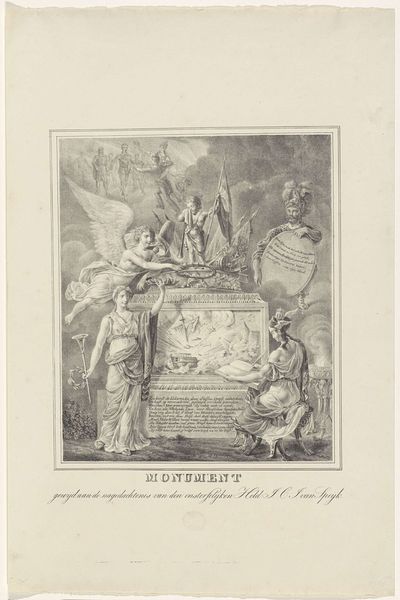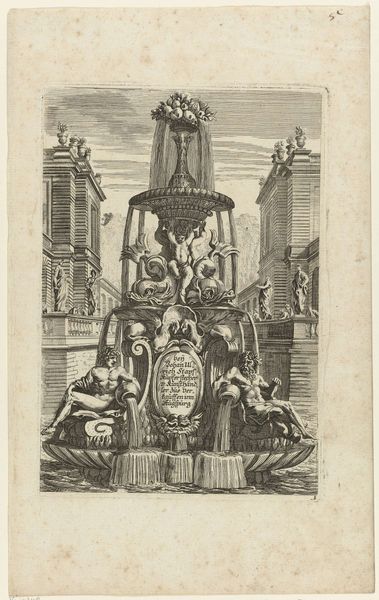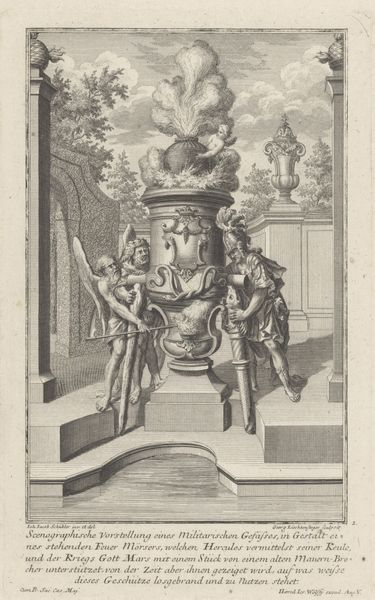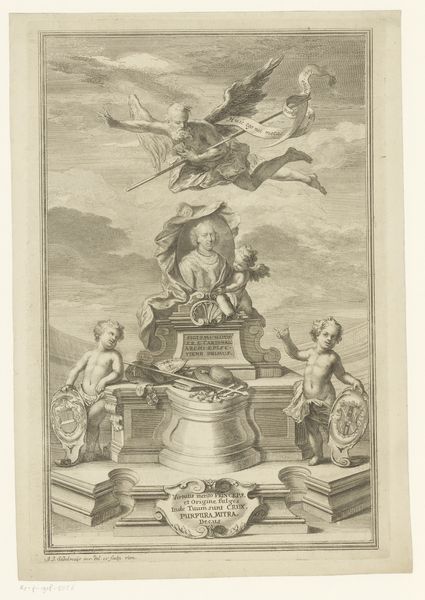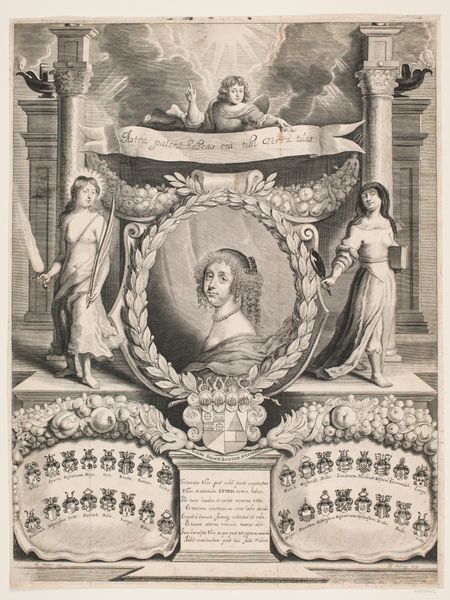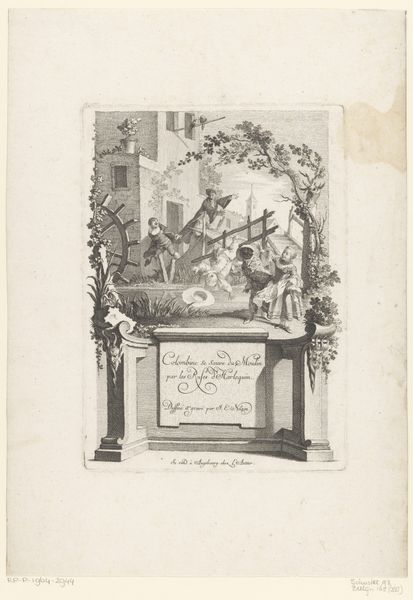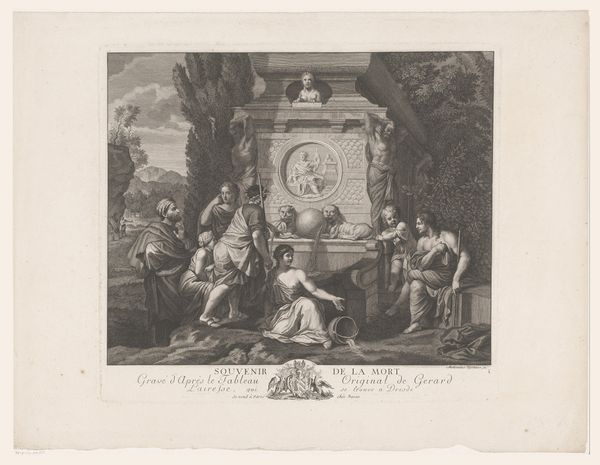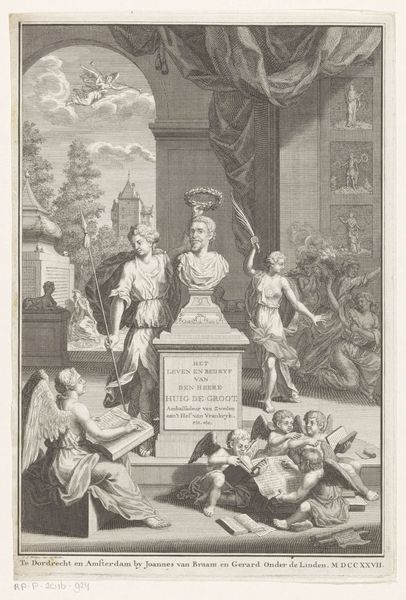
Monument voor het derde eeuwfeest van de Hervorming, 1517-1817 1817
0:00
0:00
willemhendrikhoogkamer
Rijksmuseum
print, engraving
#
neoclacissism
#
allegory
# print
#
old engraving style
#
figuration
#
history-painting
#
engraving
Dimensions: height 415 mm, width 288 mm
Copyright: Rijks Museum: Open Domain
Curator: This engraving by Willem Hendrik Hoogkamer commemorates the third centenary of the Reformation, from 1517 to 1817. It's currently held here at the Rijksmuseum. Editor: The symmetry strikes me first – the image is structured almost like a stage set, yet also feels top-heavy with that portrait of Luther floating up above. Curator: Yes, the composition clearly borrows from neoclassical ideals. But it also offers a snapshot of the printing practices of the time. Look closely at the crispness of the lines. These engravings, produced en masse, made complex political and religious allegories accessible to a broad audience. Editor: The allegory is heavy, isn’t it? We’ve got figures who appear to be angels alongside classical allegorical figures. Luther presides from above with a rather fierce bird besides him. I'm particularly drawn to the central scene – what exactly is happening down there? Curator: Below Luther, within the architectural structure, the middle register depicts Luther nailing his theses. The act, pivotal to the Reformation, literally being framed by neo-classical architecture. At the base, classical figures enact more allegorical imagery, hinting at the historical trajectory being celebrated. These images could then reach many more people than could have been reached through painting or sculpture. Editor: Right, this really makes it more widely accessible. This is all intended to serve as a reminder of a crucial shift, so viewers internalize the messages through these symbols and staged narratives. I see laborers hammering below, possibly destroying idols. I can't help but wonder how viewers would interpret those images and relate them to contemporary Dutch society. What objects or materials might represent their understanding of the Reform? Curator: That’s exactly it. Consider this engraving as not merely an image but as a fabricated object intended for distribution, its meaning being realized through repetitive handling and looking at the printed page itself. Editor: It certainly invites us to reflect on the Reformation’s ongoing significance, not just as history, but as a story still actively shaped through its visual legacy and modes of making accessible messaging. Curator: Absolutely. And hopefully, consider the labor and intention interwoven into its creation. The print’s message as materially produced.
Comments
No comments
Be the first to comment and join the conversation on the ultimate creative platform.
